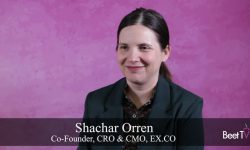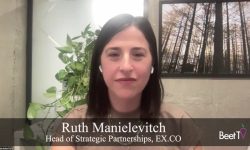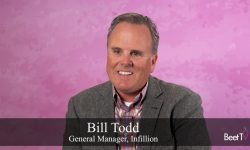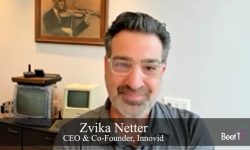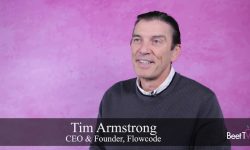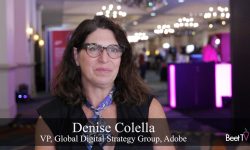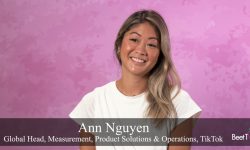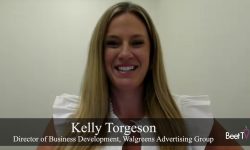With a footprint as broad as The Walt Disney Company, Lisa Valentino can count on at least one kind of diversity.
As EVP, Client & Brand Solutions, for Disney Advertising Sales, Valentino is figuring out how best to monetize the ad-supported channels across Disney’s massive portfolio.
In 2021, that means automation, leveraging Disney’s own customer data, widening the client base and improving inclusion.
Tapping Disney’s footprint
Disney has spent the last three years building an audience graph, now including Hulu data, with over 1,000 audience identity segments, buyable in an automated fashion.
“We see the results of those outperforming non-targeted work that we’re doing,” says Valentino in this video interview with Beet.TV.
“So we know that Disney first-party data has the opportunity to really drive performance and escalate performance.”
Identity questions
And Valentino has bold bets for how that scale will be achieved.
“Fifty percent of our business will be automated,” she says. “The majority of our (ad) supply will be addressable (and) will be coming through endpoints that are connected.”
With the ongoing limitations imposed on traditional digital audience identifiers, a customer footprint like Disney’s own is going to be useful when it comes to ad targeting.
Rebooting Reach: Disney’s Valentino Combines Scale With Smarts
But Valentino still wants to tap other providers’ audience data, too. So her team is beginning to use “clean room” software, designed as a safe space to match up audience profiles from different providers with privacy in mind, to tackle it.
“We are very much building clean room solutions with the various partners out there, working closely with companies like InfoSum, like Snowflake, et cetera, that really allow clients to plan, to optimise and target using data with the utmost and privacy protections,” she says.
“There’s a lot of development work happening. We will be standing up clean room solutions for several agencies. And my early observations on this is, we’re very early days.
“There’s a ton of educating to be done. There’s a ton of building to be done. And I think everybody is at the crawl phase at the moment, which gives us a real opportunity to build solutions that can scale over at a longterm, which is what our goal is there, ultimately.”
Cultural breadth
There are ways in which Disney wants to be even broader. For one, it wants to cast a wider advertiser net, having recently launched a self-serve ad platform to open up Disney ad channels to smaller and direct-to-consumer businesses.
Variety Upfronts presented by @Disney will feature an exclusive “Disney and the Future of Inclusive Creativity and Content” panel with top executives from @disneyadsales and @FreeformTV / Onyx Collective on June 15. Register now. https://t.co/BfDOURJGA5 pic.twitter.com/HBzvaaHHVa
— Variety (@Variety) June 8, 2021
But cultural breadth is on the agenda, too.
At its recent upfront sales pitch, Disney’s Hulu launched Onyx Collective, a content brand for people of color; announced an ABC News strand called Voices Of Change and pitched The Undefeated, a news site covering race and sport.
“I’m happy to report that that was very successful,” Valentino says. “All of our agencies are leaning in. They understand the importance of it, their clients understand the importance of it.”
Underpinning it all is a drive to measure exactly how successful the initiatives are.
A system called Disney Culture Index “is going to score ads based on cultural resonance”, Valentino says. “It’s a game-changer for clients because they can now look at, in the mid campaign and post-campaign, ‘How are their investments in content, how is their creativity resonating with consumers and making a difference?’
“So, we’re excited about this first mover opportunity. It’s the right thing to do.”






